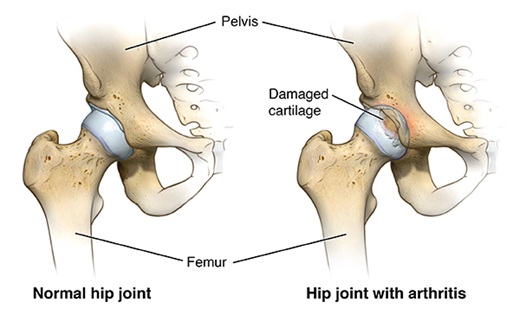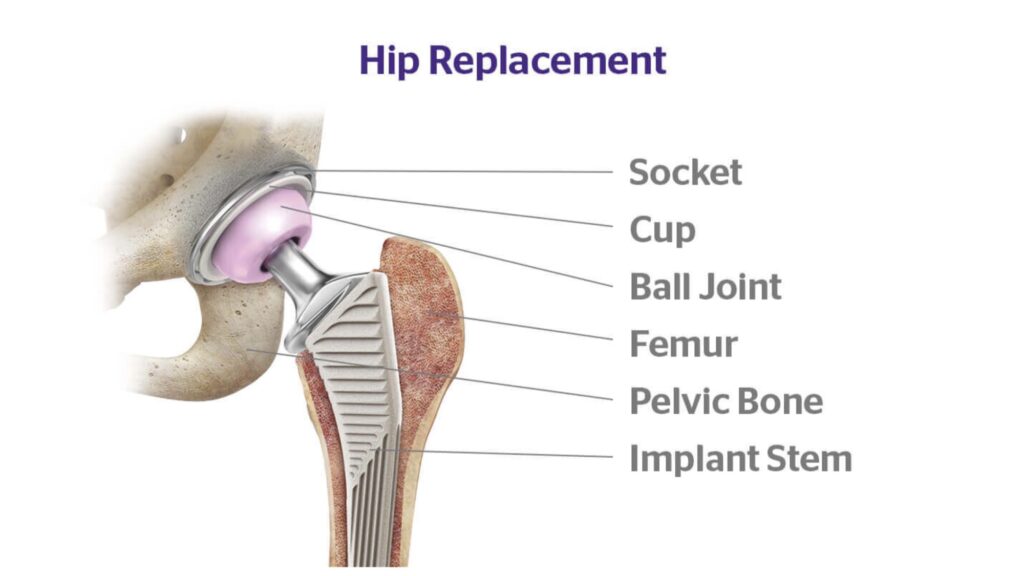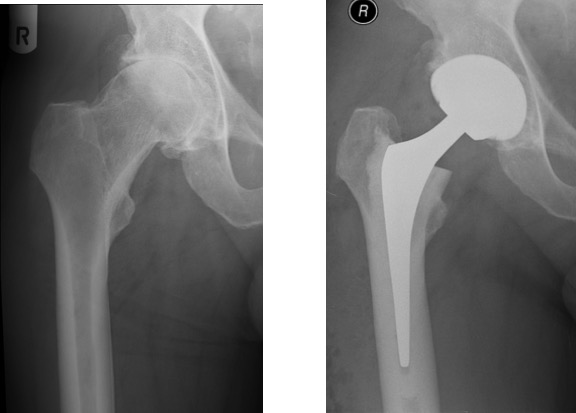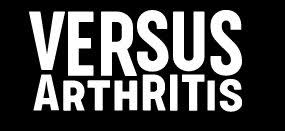Total Hip Replacement
Hip arthritis is a common cause of pain in the hip. The symptoms can vary from a mild ache in your groin or thigh and buttock area with occasional spread down to the knee, to severe and constant pain that can significantly affect your ability to walk and carry out your normal daily activities. When the arthritis is severe it can affect your ability to sleep properly often leaving you tired and frustrated.
Osteoarthritis (OA) is a chronic degenerative condition that can affect any synovial joint in the body and is the most common type of arthritis to affect the hip joint.
The underlying cause of osteoarthritis is unknown so unfortunately there is no non-surgical treatment available for the advanced stages of OA.
The hip is a ball and socket type joint with the ball being made up of the head of the thigh bone (femur) and its complimentary socket being found in the pelvis (acetabulum). The femoral head and lining of the acetabulum are covered with a smooth white gristle which acts as a low friction bearing surface called cartilage. Similar to oil in a car engine the moving parts are lubricated with a viscous lubricant called synovial fluid.
In a normal hip joint these features allow for the stable, pain free, wide range of movement required for normal daily activities such as walking, running and sitting. Unfortunately OA affects all the structures of the hip joint including the cartilage and underlying bone as well as the soft tissue components such as the ligaments and joint capsule causing them to degenerate.
Most importantly in OA the normal healthy bearing surfaces (cartilage) of the hip starts to breakdown irreversibly and this combined with loss of the normal spherical shape of the femoral head as a result of underlying bone changes and contracture and thickening of the joint capsule and ligaments results in a painful restriction of hip movements.
A total hip replacement involves removing the diseased ball (femoral head) and replacing it with a femoral prosthesis which comprises of a metal stem that is placed inside the top of the thigh bone (femur) with a new ball on top made of either metal or ceramic. The diseased socket (acetabulum) is reshaped using special graters to accept a new spherical artificial socket (cup). These components are fixed to the bone either by using a special bone cement (cemented) or by using a press-fit technique and coating the components with a substance that allows bone to grow onto their surface (uncemented). Often a combination of these techniques is used.
The new ball and socket glide smoothly together resulting in an improvement in pain and range of movement of the hip.



Patient reviews
A little note to say a big thank you to you and all your colleagues. I could not have been treated any better had I been Royalty. My hip is absolutely fine and I must thank you again for giving me back my full life.
MT
Thank you so much for giving me my quality of life back with my new hips. We are so lucky to live in this country with all this wonderful treatment and dedicated people like yourself. I will be eternally grateful to you and cannot thank you enough.
AP
Many thanks for your wonderful care and support in performing my right hip operation. Sometimes thank you is not enough.
SP







